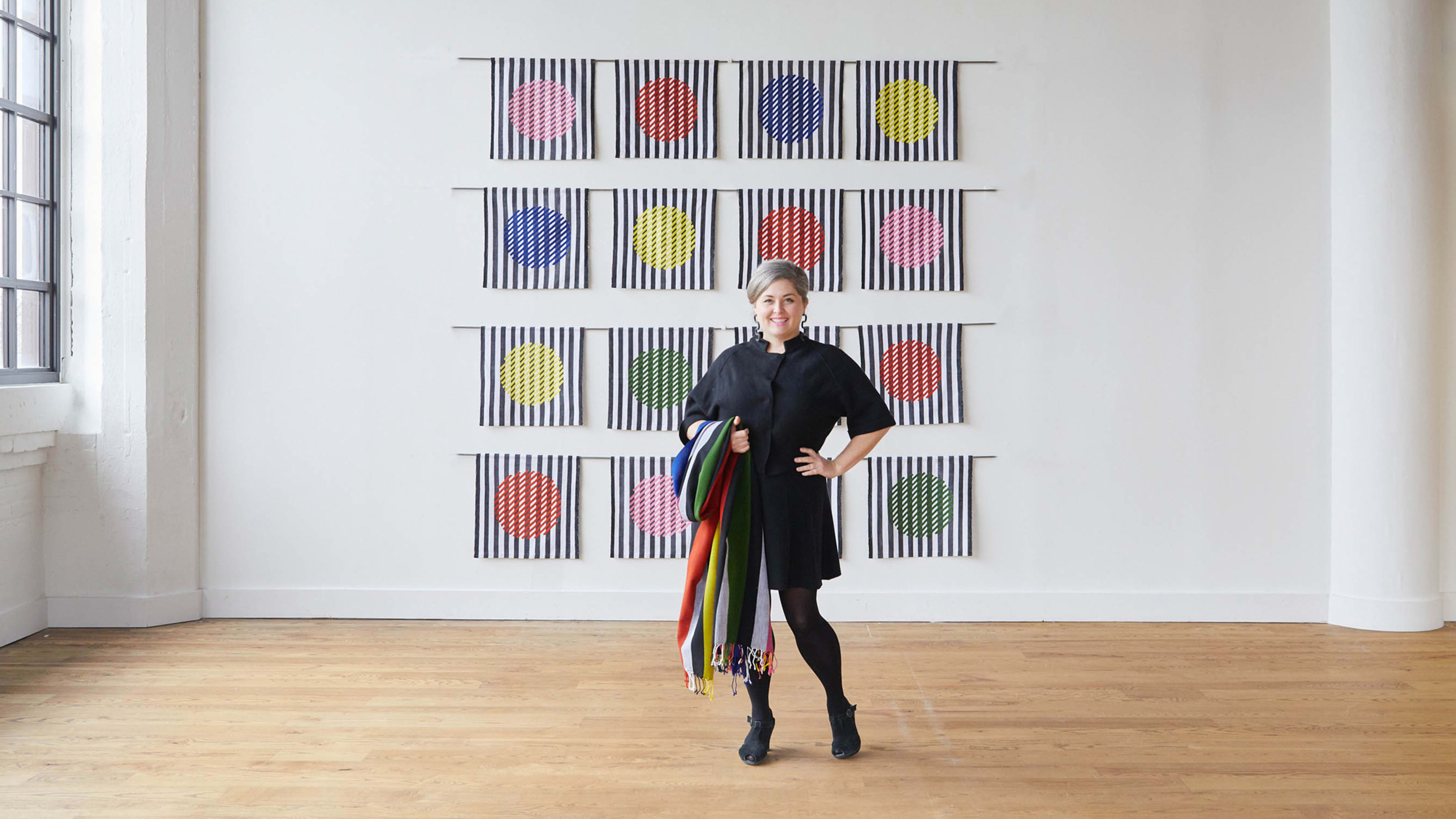Molly Fitzpatrick is a textile designer and founder of DittoHouse, an Ohio-based home textile brand for ethically produced textiles. Having designed textiles for a wide variety of markets, including major airlines, home furnishings, and baby accessories, Fitzpatrick believes in sustainable textile designs that transcend trends and are created with a rich appreciation of the important role textiles play in our lives. She spoke to Doreen Lorenzo for Designing Women, a series of interviews with brilliant women in the design industry.
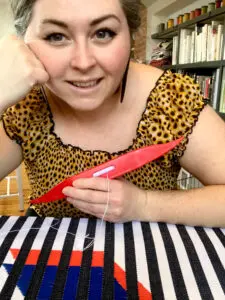
Fast Company: When did you realize you had an interest in design?
Molly Fitzpatrick: I grew up in a very creative household. My mom and dad always encouraged us to make things, draw, and experiment. But then in high school, I started getting more intentional about it. I realized I could put certain colors or patterns together and really see something come alive. That’s when I first thought about a career in design.
FC: What projects are you most proud of?
MF: Working in a mill was the best thing to experience at an early part of my career. I started as an intern and asked my design director, “Can I shadow everyone working here?” I wasn’t doing anything groundbreaking or fabulous, but I saw it as a great opportunity. Closer to the end of my time there, I got to design a fabric for U.S. Airlines. I think textiles are super comforting, so to know I designed a pattern that a child could trace their finger along to pass the time on a flight or maybe distract someone from feeling nervous, that lights me up to think about that.
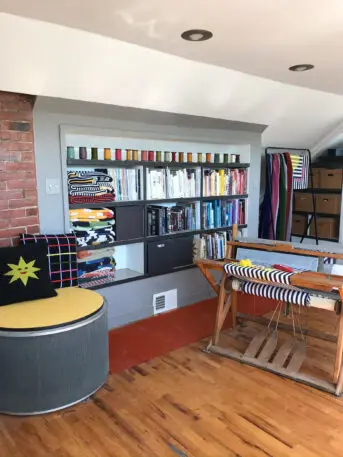
FC: Tell us about DittoHouse. What made you decide to start your own textile brand?
MF: I started DittoHouse in 2015. It was a year after my first child was born, and I just wanted cute, cozy textiles around the house—fabrics that fit a modern aesthetic but were also comfortable for the baby. I have a background in textile manufacturing, so I knew how to get my ideas made into textiles, and that’s how DittoHouse was born.
FC: What are some of the challenges you faced when you started DittoHouse? How did you navigate them?
MF: When I first started, everything was a challenge. I went to art school, so I didn’t know anything about business. It was all new to me. I’m not afraid to ask questions. I’d do research and it seemed like every question I had would lead to an answer and then that would lead to another question. I had to figure it out as I went, starting with making sure I had the essentials, like a tax accountant and a lawyer, to everything else as far as setting up a website and wholesale business. I kept following questions and answers, and I still am today.
FC: For those who may not know how textiles are made, could you share what that process has looked like historically?
MF: There are a lot of different ways that textiles can be made. They can be woven, which is threads interacting and crossing to create a cloth. They can be knit and they can be felted. There are a lot of different processes from handcrafted textiles, which is the way that it’s been done for thousands of years since weaving was invented, all the way to high-speed technology that’s being used in various mills.
It’s really important for me to understand various cultures and the history of their textile manufacturing processes, acknowledging that the textiles industry in America is built upon a troubled history, and seeking to repair centuries of abuse. Knowing what goes into making a textile allows me to design from a place of appreciation and respect for the practice.
FC: What makes DittoHouse’s approach different?
MF: I make sure to use sustainable fibers for DittoHouse. I’m lucky that I found a partner mill in America that already used these recycled fibers. Once I learned about how they made the threads, I was completely sold on it. What they do is they take scraps from the waste material, sort them by color, grind [them] up and spin [them] into new yarn. [The material] is already dyed and produced cotton, but it eliminates any water waste from having to dye new materials. It also removes that scrap cloth from going into a landfill. It’s a really ingenious process that creates a new yarn without any of the negative environmental impacts that would otherwise be needed to create a new yarn.
DittoHouse also works with artisan partners in Guatemala. I like to understand their process and how they create their textiles. That way when I request something, I can be sure I’m doing so respectfully with an appreciation for their craft and knowledge of what’s within their capabilities. I’m not wasting time or resources throughout the collaboration.
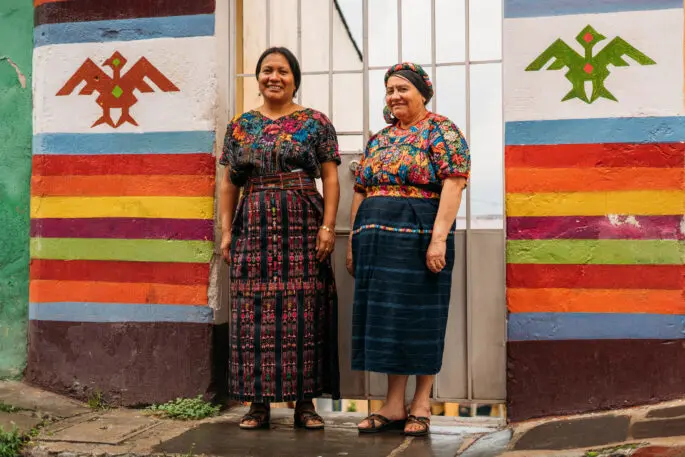
FC: How did you find these textile partners in different parts of the world?
MF: I was first introduced to Guatemalan textiles about 15 years ago and fell in love. They are gorgeous, wonderful textiles. Then my sister-in-law went on a trip to Guatemala and bought a beautiful scarf from this Guatemalan cooperative named Trama Textiles. After she told me about Trama Textiles, I followed them on social media and kept in touch with them.
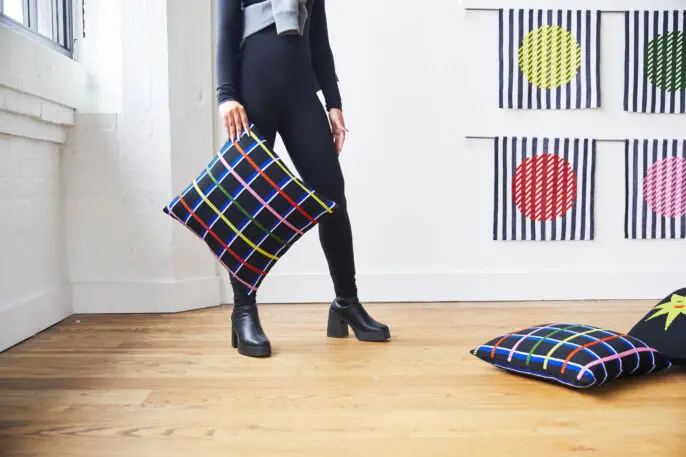
There came a point in my career, just a few years ago, when I saw so many Guatemalan people having to flee their homeland because of violence and hunger, a lot of it brought on by America’s involvement there. It hurt me to see that, and I thought there might be a way to take my small manufacturing budget and reallocate those funds into these Indigenous communities.
I see being a textile designer and an entrepreneur as a great privilege and honor in the same way that it’s a responsibility. I saw my budget as a moral document and thought about what I could do to align it with my values—even if it was a small amount—and where I could take it.
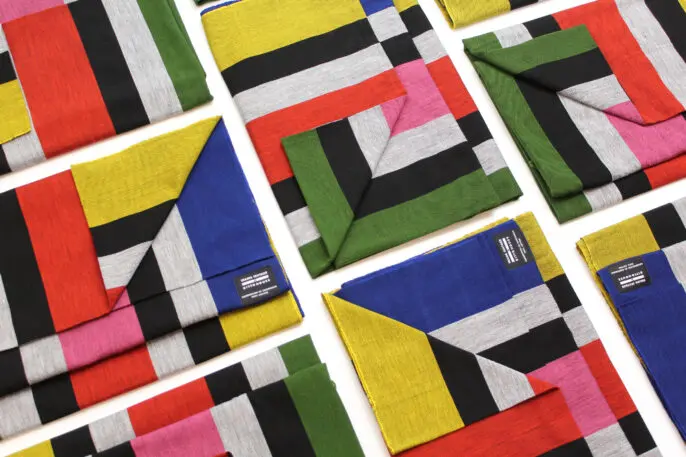
FC: What are some of the takeaways from doing global collaborations like with Trama Textiles?
MF: One of the biggest takeaways when finding artists and partners or thinking about collaborating is coming at it from the perspective of understanding that organizations are already doing the work. They have already preserved their craft. They care for their community. They’re established.
In the case of Trama Textiles, they’ve been doing this for 30 years. They would be doing that with or without me. I see a lot of collaborations in this capacity are shown as inherently charitable. I don’t see that as the case. I really appreciate what they are doing and want to see how I can connect some dots between the customers I have here and the beautiful work they are doing there in Guatemala. I want to build a system of solidarity between my customers, my passion for textiles, and Trama Textiles.
FC: How has it influenced your perspective on textile design?
MF: In addition to DittoHouse, I also design for contract textiles, which are for public spaces like hospitality, healthcare, restaurants, etc. I’m lucky that I’ve been able to work in these various capacities, but it’s always been digital. I create the design, those files get sent to a mill, and then it’s done. Now, to be able to work with people doing it by hand, is a dream come true.
When I first held a Guatemalan textile woven on a backstrap loom, I never would have thought that I could somehow work with these masters of their craft. Getting to expand my horizon by working with artists and partners around the world has helped me be a better communicator. I understand how to draft my ideas so they’re clear and detailed. It’s also given me the opportunity to get back into hand weaving, which is how I started. I’ve gotten back into hand-weaving my ideas on a loom where I can slow down and be intentional about it. It helps me relate to what the women of Trama Textile are doing when they’re weaving at their homes.
FC: Has the rise of digital textile printing and nonwoven fabrics affected business?
MF: I don’t work with many digital textile printers, but I know it’s vital to the textile industry. It’s a way to create materials without exceeding water or material waste because you can print what you need. Of course, it’s a faster process, but as textile designers using this technology, we still have a moral obligation to respect traditional textile design and advocate for proper use. It’s so easy for a company to take one of these gorgeous handwoven textiles, scan it at a high resolution, and just print it off.
I feel it’s my responsibility to say loud and clear that Indigenous textile designs are not open source. These designs are culturally significant, and if they’re used without compensation and permission on mundane items, it’s deeply disrespectful and hurtful to the communities that are the collective custodians of these designs.
FC: What advice would you give to women aspiring to be designers and entrepreneurs?
MF: Figure out what it is that you love. Once you’re crystal clear on what that is, be true to yourself and make the decisions moving forward based on what you want to do, not what you should do or what others are doing. When I learned designing textiles is what made me come alive, I knew that I had to stay true to myself and find a way to make a career in textiles work for me.
Now I’m a mom of two kids and I like that I can practice my craft daily, homeschool my kids, and give them the space to find what makes them come alive and how they can share their gifts with the world. What works for me is what works for my family. Hopefully, once you find what calls to you, you can keep it going in creative, fabulous ways as your career and contribution to the world.
Recognize your brand’s excellence by applying to this year’s Brands That Matter Awards before the early-rate deadline, May 3.
